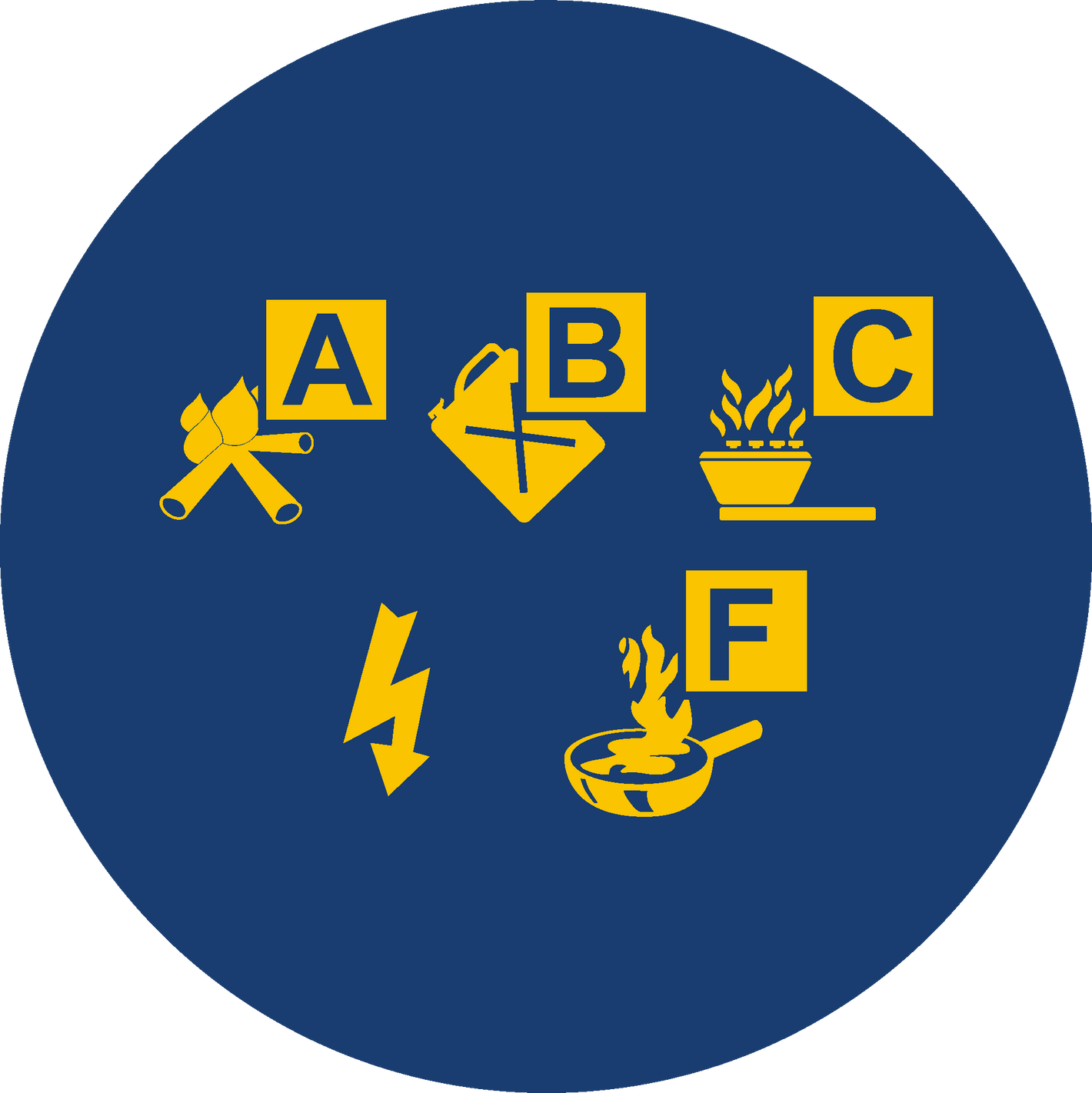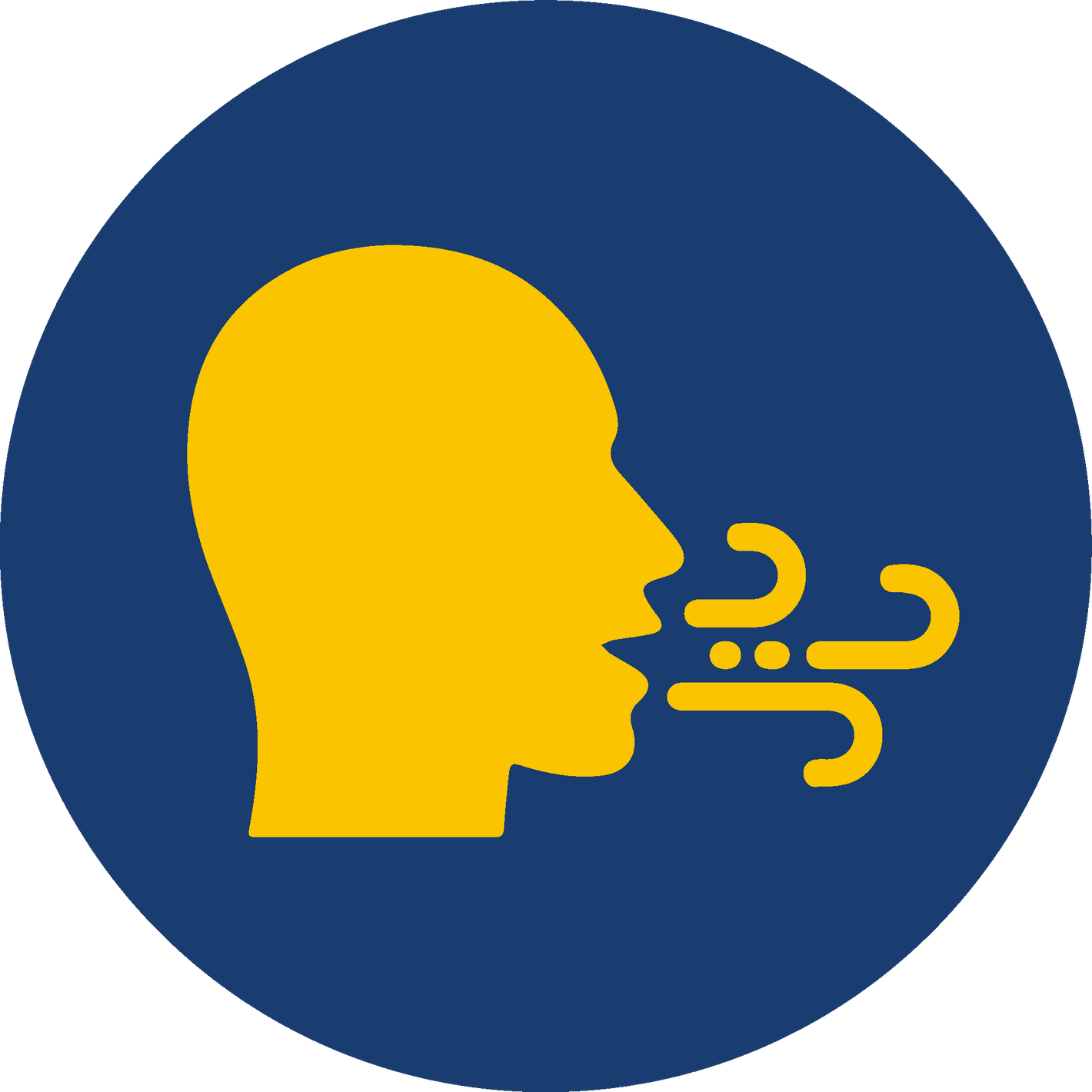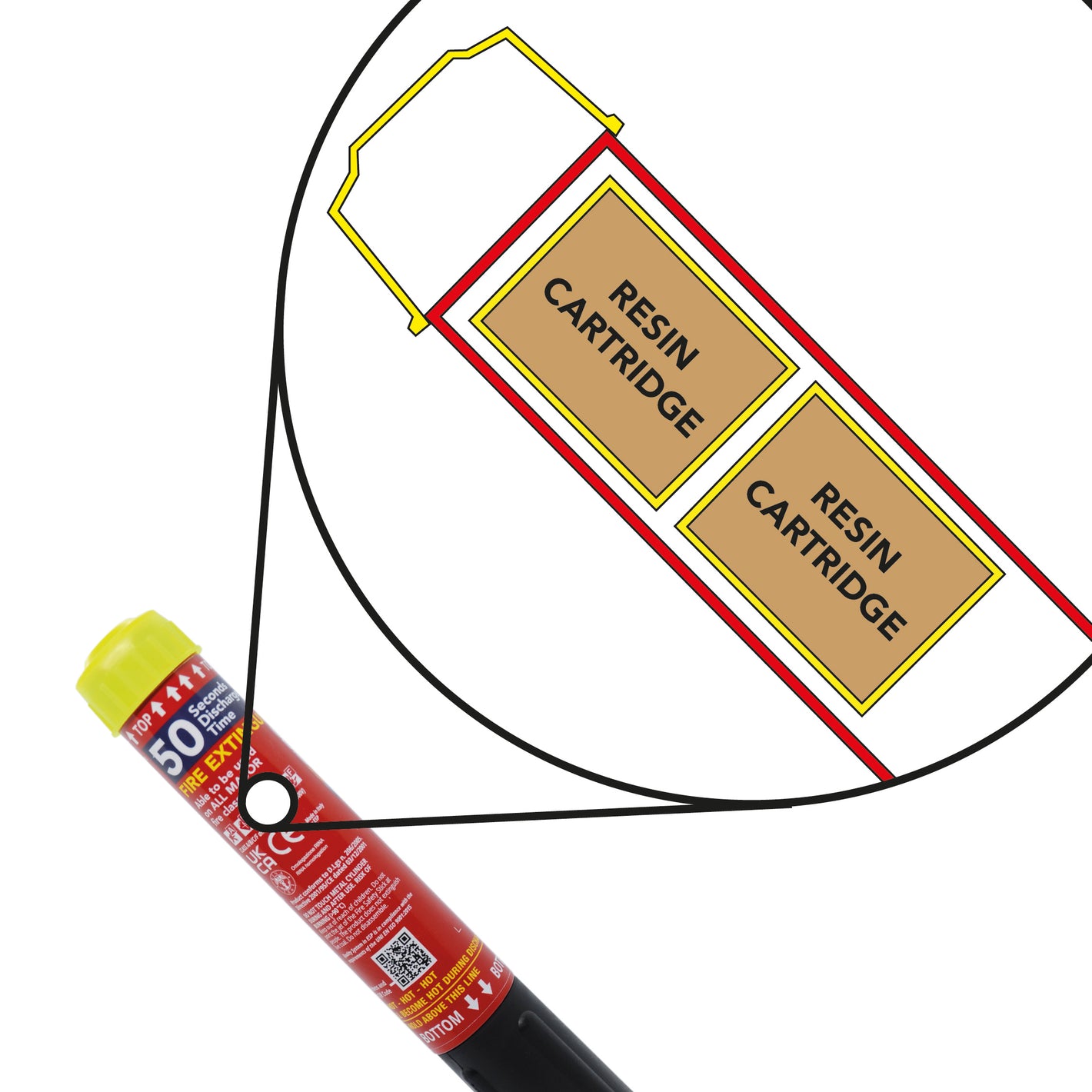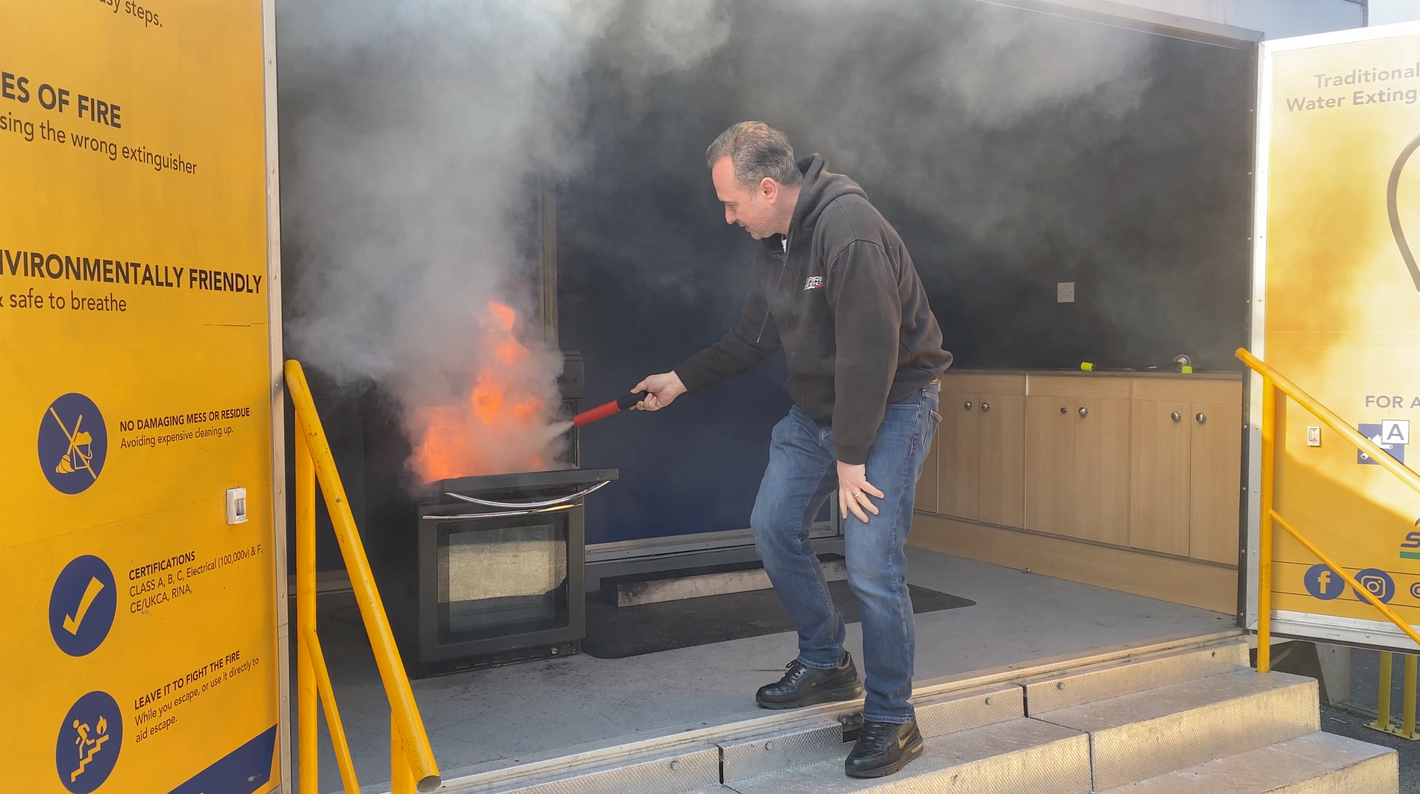What is the Fire Safety Stick?
Short summary:
The Fire Safety Stick is an all-new kind of fire extinguisher that requires less knowledge or training for the everyday person. An extinguisher which works on 5 classes of fire, meaning less margin for error if accidentally choosing the incorrect traditional extinguisher, and making the fire worse in a high-stress situation.
The Fire Safety Stick is unlike any other extinguisher on the market. It is unpressurised and is activated much like striking a match.
What makes the Fire Safety Stick so much better?
-

15 Year Shelf Life
Many other traditional extinguishers have a shelf life of 5 years.
-

Discharge Time
50 or 100 second models available!
A 1kg powder extinguisher typically reaches up to 7 seconds.
-

Weight & Size
Weighing from only 215 grams (FSS50) or 365 grams (FSS100).
-

NO Corrosive Mess
The Fire Safety Stick does NOT leave behind any corrosive mess or residue.
-

5 Classes of Fires
Certified to tackle: A (Flammable Materials) B (Flammable Liquids) C (Flammable Gases) Electrical (up to 100,000v) & F (Cooking Oils & Fats).
-

NO Servicing
No need to annually service! We only recommend regular visual inspection.
-

Safe to Breathe
The Fire Safety Stick's discharge is safe to breathe in.
-

Eco-Friendly
The discharge produced from the Fire Safety Stick has NO global warming potential and NO ozone depletion potential.
-

Easy to Recycle
After the Fire Safety Stick has been used, it can be separated and easily recycled.
The Science.
The science behind the Fire Safety Stick will explain how it can both simultaneously extinguish a fire and not cause any breathing difficulties.
-

Potassium Free Radicals
Here’s the chemistry behind it
The extinguishing process involves two different reactions: one is physical and the other, chemical. The physical reaction relates to potassium ions (or Free Radicals) tendency to oxidise rapidly in air. When in contact with air, alkaline salts consume great quantities of oxygen, thus depriving fires of oxygen. Then the chemical reaction is created through the stable link between potassium particles and the fire’s combustion particles.
Through the two reactions, a quick oxidation process takes place, immediately transforming the jet from a solid state into a gaseous state and freeing the potassium particles. These atoms are able to intercept and interrupt any other free particles produced by the fire’s natural chain reaction combustion process.
Potassium has strong inhibitor qualities due to its weak ionization energies. The extinguishing agent being used is composed of Potassium Nitrate, organic oxidizer, and plasticizer resin.
When the Potassium Nitrate (KNO3) reacts (inside the body of the extinguisher) it breaks down and the aerosol that is formed is made up primarily of free radicals of Potassium K+, of Nitrogen N (an inert gas).
The aerosol that comes out of the unit reacts with the fire. Potassium radicals (K+) capture the Oxygen of the combustion thereby extinguishing it.
At the end of the extinguishing process the following is discharged to the atmosphere:
As a solid: particles of Potassium (that have reacted with the Oxygen of the fire) having a size between 3-4 microns. These particles are invisible at sight and heavier than air. They disperse in the atmosphere and tend to deposit on the ground in no appreciable amounts.
As a gas: As Nitrogen; an inert gas already present in the air we breathe at more or less 78%.
As water vapour (and lastly) extremely minimal toxic by-products that are a result of the combustion process. (This amount is so slight, it does not conductive to electricity.
-

Best Way to Tackle a Fire
Unlike a dry chemical extinguisher that combats a blaze by depositing a large amount of solid powder on the fire, the Fire Safety Stick fights fire by releasing Nitrogen dioxide (78% of our atmosphere is nitrogen gas) and the active agent, Potassium Free Radicals. This potassium ion attaches itself to the oxygen surrounding the fire robbing its ability to stick to the chain of combustion (without affecting one's ability to breathe that oxygen). The goal is therefore to use the discharge coming out of the FSS to create a ‘cloud of containment’ around a fire. Creating a cloud that prevents any outside and unattached oxygen from getting to the fire is essential and is the same strategy that should also be used with a Halon/Halotron or CO2 extinguisher. The best technique is to take advantage of the long discharge time offered by the Fire Safety Stick and to approach a fire from a moderate distance progressively getting closer to its source. During the approach, move the FSS slowly around the fire always directing it towards the centre, already it will be suppressing the fire from that distance. This will contain the fire and allow the active agent the ability to work. Tight areas with lots of pockets (like the engine bay of a car for example) brings out the strengths of the FSS as the gas, will fill all the voids not directly accessible; both putting out a fire and preventing a re-flash.




